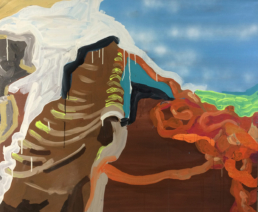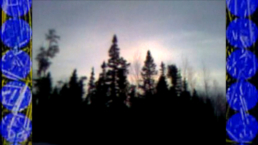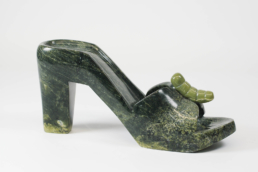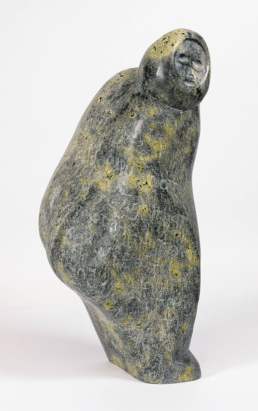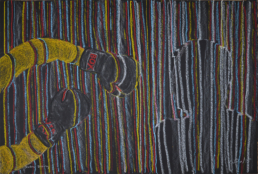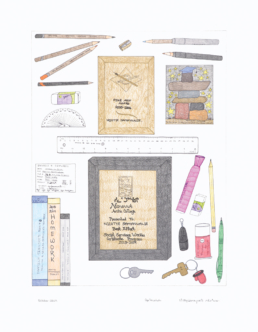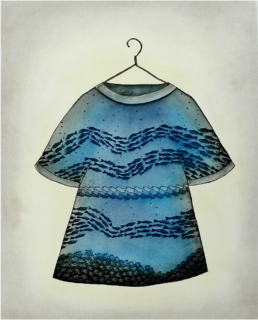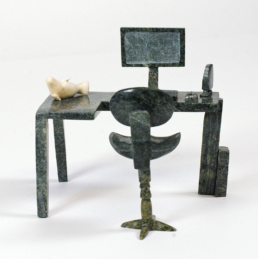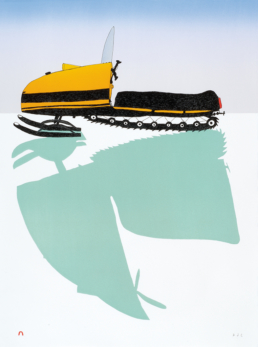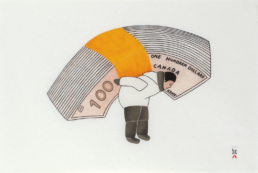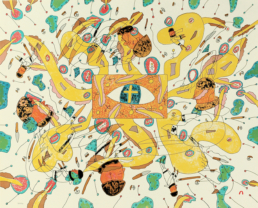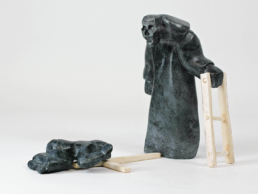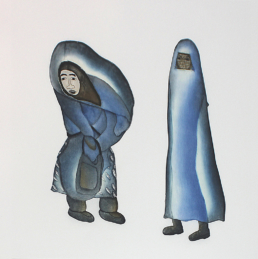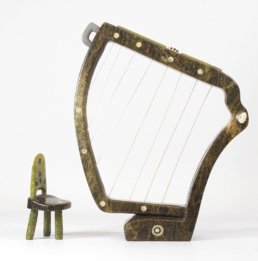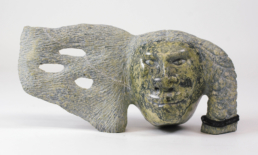April 29 – June 18, 2016
Opening reception: Friday, April 29th from 6-8pm
Contemporary Native Art Biennial, 3rd edition
Culture Shift – Challenging Identity
Curator: Karine Gaucher
La Guilde
1356, rue Sherbrooke Ouest
Montreal (QC)
GROENLAND / GREENLAND : Bolatta Silis-Høegh (Inuit)
NUNAVUT : Shuvinai Ashoona (Inuit), Ningeosiaq Ashoona (Inuit), Qavavau Manumie (Inuit), Ohotaq Mikkigak (Inuit), Jamasie Pitseolak (Inuit), Tapaungai Qatsiya (Inuit), Nicotye Samayualie (Inuit), Toonoo Sharky (Inuit), Ningeokuluk Teevee (Inuit), Jutai Toonoo (Inuit), Samonie Toonoo (Inuit).
QUÉBEC : Geronimo Inutiq (Inuit) (originaire du / from Nunavut)
Text by Karine Gaucher
Editing and translation by Stefan Sobanski
Inuit identity is often represented through nordicity, a common belief system and a lifestyle focusing on the past, frozen in time. This idea is, however, becoming less and less resonant in today’s reality. Identity being a construction, it continually transforms itself in parallel with individuals’ and communities’ evolution. Yet, from the second half of the twentieth century moving forward, several successive notable changes have occurred and have profoundly transformed the Inuit community and their artistic productions, owing in particular to a major form of identity-based questioning.
In the ‘90s, borders between North and South progressively disappeared with the emergence of new information and communication technologies, with among others wireless telephony and the Internet. Consequence of globalization, Inuit artists’ pictorial choices are based on a renewed hybrid identity, are simultaneously rooted in tradition and resolutely forward-thinking. This hybridity is omnipresent in the works of the thirteen artists taking part in the Culture Shift: Challenging Identity exhibition, which gathers artists from Nunavik, Nunavut and Greenland: Ningeosiaq Ashooona, Shuvinai Ashoona, Bolatta Silis-Høegh, Geronimo Inutiq, Qavavau Manumie, Ohotaq Mikkigak, Jamasee Padluq Pitseolak, Tapaungai Qatsiya, Nicotye Samayualie, Toonoo Sharky, Ningeokuluk Teevee, Jutai Toonoo and Samonie Toonoo.
Each of the works presented in this exhibition questions, in its own way, traditional schemas of representation, thus challenging identity at the same time. For example, Jutai Toonoo uses traditional materials to express a scathing critique of assimilation policies that were implemented as of the ‘40s by the federal government, policies which eventually lead to acculturation. Lucky Man by Qavavau Manumie also depicts another consequence resulting from the enforcement of these policies: Canadian Inuit communities’ economic dependence on the government. Such policies alter their identity by tampering with it and perniciously erase the millennial livelihood system to which they are accustomed. This reflection is equally found in the Seal Meat series in which the Greenlandic artist Bolatta Silis-Høegh portrays animal viscera with an abstract painterly treatment and in which the tableau becomes a representation of its own cultural hybridity. In the same manner, media artist Geronimo Inutiq collects creative samplings, a technique similar to collage, so as to criticize the colonialist image so often conveyed in society. By appropriating archival images of a stereotypical North and juxtaposing them to images that better reflect reality, he carries out a semantic diversion and calls for a redefinition of identity through a hybrid representation of nordicity.
In a nutshell, the artwork, more personal and free-spirited, remains, at least formally speaking, strongly attached to traditional Inuit art. So, since culture plays a fundamental role in peoples’ acknowledgment of self-identity, the artworks become, in a perpetually evolving Arctic region, the voice expressing this dual identity, located somewhere between tradition and modernity, past and future, between stereotypes and reality.

